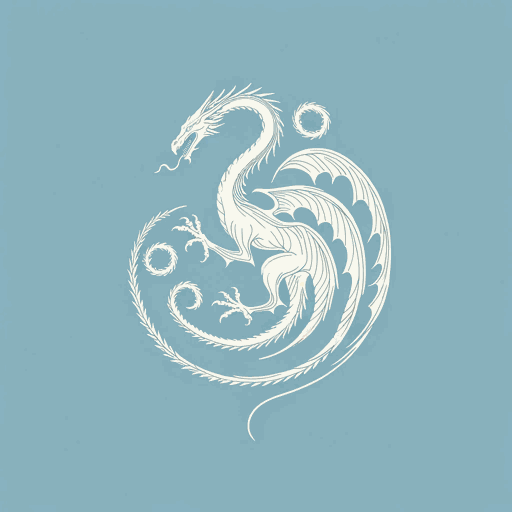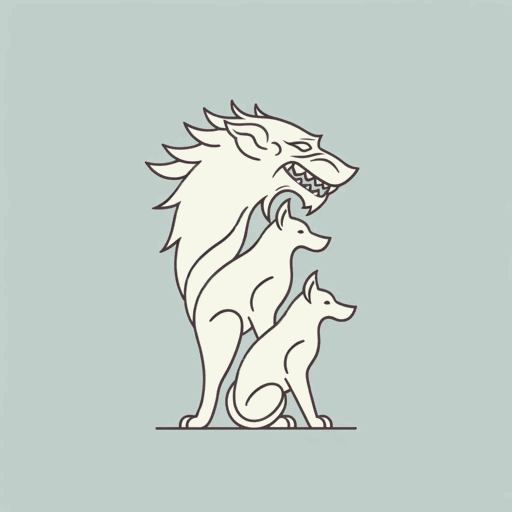68 pages • 2 hours read
George R. R. MartinFire & Blood
Fiction | Novel | Adult | Published in 2018A modern alternative to SparkNotes and CliffsNotes, SuperSummary offers high-quality Study Guides with detailed chapter summaries and analysis of major themes, characters, and more.
Summary and Study Guide
Overview
Originally published in 2018, Fire & Blood: 300 Years Before A Game of Thrones (The Targaryen Dynasty: The House of the Dragon) is the first part of the fictional history of the world of Westeros, the setting for George R. R. Martin’s epic fantasy series A Song of Ice and Fire. In the novels, Martin transforms the war, pageantry, and politicking of medieval and Renaissance Europe by creating a fantasy world in which the ability to ride dragons propels the Targaryen family to power. Martin has won multiple Locus Awards for his fantasy writing, and HBO adaptations of works in A Song of Ice and Fire have made him a popular success. The second half of Fire and Blood is the source material for the HBO series House of the Dragon. This guide is based on the 2022 Bantam print edition of the book.
Content Warning: The source material features depictions of sexual assault, sexual abuse, and other forms of gender-based violence. It also includes alcohol abuse, incest, domestic abuse, suicide, and ableist language related to limb differences and appearance.
Plot Summary
Gyldayn, an archmaester (scholar) of the Citadel of Westeros, chronicles the history of the Targaryens, the ruling house of Westeros for 16 generations. He relies on primary sources that sometimes conflict. His deference to authority and penchant for entertaining but inaccurate sources make him an unreliable narrator. In his history, he notes that Aegon the Conqueror (Aegon I) and his sisters Visenya and Rhaenys were the descendants of the Targaryens, dragonriders from the Valyrian Freehold. A Targaryen with the gift of foresight warned the family to leave the Freehold because a cataclysm was coming. When the Doom of Valyria destroyed the Valyrian Freehold, other survivors settled in the Free Cities to the east of the Narrow Sea, but the Targaryens had already gone west over the sea to settle in Westeros.
Although the Targaryens were not traditionally an influential family, they were the most powerful Valyrian refugees after the Doom because they were the sole dragon lords left in the known world. Their ability to ride and control dragons allowed Aegon to conquer Westeros in a brutal war. Aegon created the Iron Throne out of the melted swords of his enemies as a reminder of this defeat. Before the Conquest, Westeros comprised seven major kingdoms: Dorne, the Reach, Storm’s End, Casterly Rock, Riverrun, Winterfell, and what later became King’s Landing. The northern border of Westeros was marked by the Wall, an enormous structure guarded by men of the Night’s Watch, a sworn brotherhood devoted to keeping raiders and nameless creatures at bay. Aegon won most of Westeros but never fully gained control over Dorne, where his sister Rhaenys lost her life years later.
Aegon and his sisters—whom he also married—created the institutions that forged the states and petty kingdoms into a sovereign whole, but conflict was built into their dynasty from the beginning. With two wives, Aegon produced two competing lines of succession: Aenys, son of Rhaenys, and Maegor, son of Visenya. The other source of conflict was religion. Aegon kept to the Valyrian tradition of incestuous marriage between first-degree relatives or siblings. That practice left its mark: Targaryens kept the white-gold hair and purple eyes of their ancestors. Their appearance and their dragons made them different from the Westerosi among whom they settled. In Westeros, the dominant faith was the Faith of the Seven, which explicitly prohibited incest. Multiple conflicts with the Faith of the Seven erupted, especially during the period when the Faith had a military force.
After Aegon the Conqueror died, Aenys I was heir. He was seen as such a feckless king that the Westerosi lords revolted. Aenys I infuriated the Faith’s soldiers by arranging the marriage of two of his children. The Targaryens did not resume full control of Westeros until Aenys I died, and Maegor I ascended the throne. Maegor I was as violent as his father, but he lacked the skills to use politics and symbols of legitimacy to maintain his power over rebellious lords. The Iron Throne, which Gyldayn claims had the power to wound and even murder unfit rulers, killed him as he sat on it one night. Jaehaerys the Conciliator and his sister-wife Alysanne restored the reputation of the Targaryens, pacified the rebel lords, and disbanded the Faith’s military force.
The couple had many children, once again creating multiple lines of succession. When they died, a council of lords was forced to pick an heir. While the Targaryens had a tradition of empowered female rulers, Westeros did not. The council rejected the claims of Jaehaerys’s daughter Rhaenys and all potential heirs who were Targaryens solely on the mother’s side. They chose Viserys I, Jaehaerys’s grandson. The decision to exclude women from rule proved fateful because at one point, Viserys I had only one surviving heir from his first marriage, Rhaenyra Targaryen. His second marriage to Alicent Hightower, daughter of a proud and rich house, produced sons Aegon the Elder and Aemond. Various lords and Viserys I’s own brother Daemon questioned his decision to make a woman heir when there were so many male claimants available. Daemon seduced his niece Rhaenyra, further undercutting her claim.
Rhaenyra married a scion of the powerful Velaryons, who were also descendants of Valyrians. When she produced two sons who looked more like her protector than her husband, rumors further undercut her legitimacy as heir. She later married Daemon after both of their spouses died; they had sons Aegon the Younger and Viserys (the grandson of Viserys I). When Viserys I died, the civil war called the Dance of the Dragons broke out. On one side were the Greens, adherents of Alicent’s son Aegon the Elder. On the other side were the Blacks, adherents of Rhaenyra. Betrayals, revenge, and the killing of kin made the war violent but short. By the end, there were fewer dragons as well.
Although Rhaenyra ruled for about half a year, commoners in the capital city of King’s Landing revolted because of high taxes and their rejection of dragons and incestuous marriage. By the end of the war, Aegon the Elder became King Aegon II. He had no legitimate male heirs of his body after war, suicide, and murder decimated the claimants. Wounds from dragon fire incapacitated him, as did an addiction to alcohol. His councilors assassinated him and installed Aegon the Younger, the surviving son of Rhaenyra, as King Aegon III under a regency headed by Unwin Peake, an ambitious lord.
Aegon III was scarred by the terrible events he witnessed during the war, and those around him lacked confidence in his ability to rule when he came of age. He also despised dragons, the source of Targaryen political and military power. His gloom lifted for a while when his brother Viserys II, thought to be lost during the Dance of Dragons, turned out to have survived. Viserys II came to Westeros with a wife, Larra of Lys, the daughter of the powerful House Rogare in Lys. The ascendance of the Rogares and questions about Aegon III’s mental state emboldened Unwin Peake to attempt a palace coup. He failed.
Aegon III began his reign inauspiciously. He forced the members of his regency council and his chief advisor, a powerful northern lord, out on the day he became king in his own right. He was an unpopular ruler who refused to use dragons and who failed to understand the importance of using symbols of power to legitimize his rule. Gyldayn closes by noting that his reign was an unsuccessful one. Martin says in an interview at the end of this volume that his inspiration for Fire and Blood was the entertaining medieval chronicles that are real-life examples of the way that extreme violence, conquest, the desire for power, and messy family relationships shaped people’s understanding of history. The questionable choices he has Gyldayn make as a historian call into question the nature of truth in historical narratives.
Related Titles
By George R. R. Martin






